Text
Vibes and Resonances
Art can be full of meaning and symbolism. It can be a fascinating puzzle, and a thoughtful commentary on the world. Yet sometimes, it simply is.
Beautiful. Calming. Emotional.
VIBE by @MCHX17 and @llai59 embodies this essence.
The artists intentionally designed an experience that soothes and taps into our subconscious. They invite us to trust our own feelings and intuition, offering respite from the information overload we face daily.
In the project's description, MCHX and vlvlaaii explain:
In a world of endless information flow, we can only rely on our feelings and intuition. This work does not carry a complex intellectual concept or a serious semantic load. On the contrary, it is created to give the viewer the opportunity to stop thinking and devote some time to their feelings.

The vibrant, flowing colour fields in VIBE evoke a soothing rhythm, reminiscent of peaceful breathing. Free from tension, they invite us to drift in an abstract sea of shapes and colours, allowing our minds to wander and associate freely.

VIBE evokes memories of the crisp hues of vibes by @remnynt, the blurs of Chroma Theory by @PawelDudko, and the shifting radiance of Light Beams by @_jzlabs.

Whether we choose to drift amidst the sea of colors and shapes or dive into the depths of our unconscious, VIBE welcomes our unique explorations. In its essence, it mirrors those blissful moments spent gazing at the clouds above. The project sparks the same whimsical daydreams of mythical creatures, allowing our minds to wander freely and ushering us into a state of relaxation and happiness.

The artwork is both a celebration of abstract, non–representational art and of the way colours, shapes and movement can send our minds on journeys of exploration.
0 notes
Text
Bytes and Blots
Gels by Shawn Douglas and Jason Brown delves into the connections between scientific exploration and artistic interpretation. At the same time, it is a throwback to my personal past and brings back warm memories of when I was young(er).

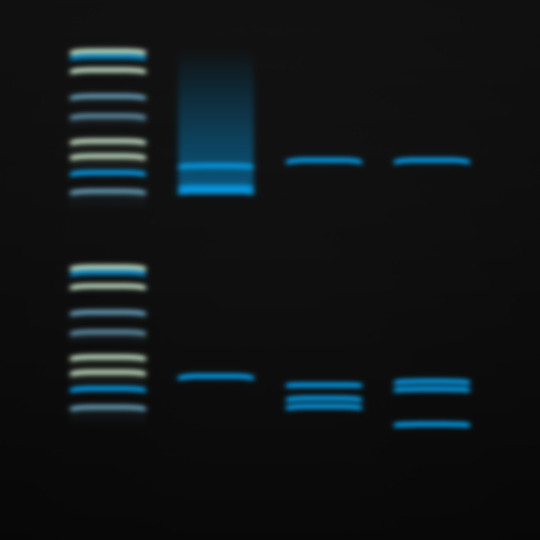

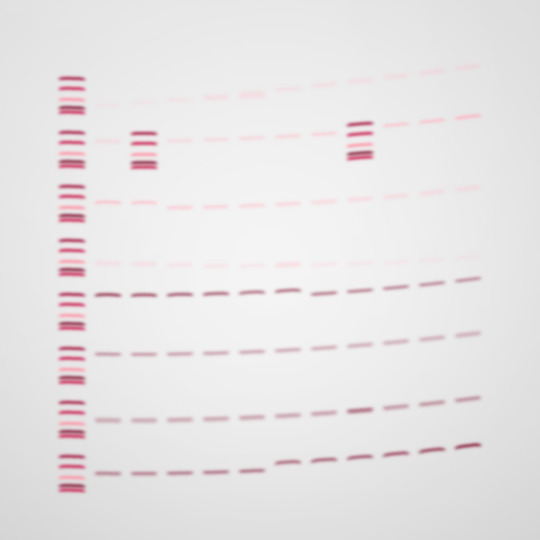
Ever since I learned about the double helix structure of deoxyribonucleic acid (DNA) in biology class, I was fascinated by the complexity of its form and the elegant simplicity of its mechanism.
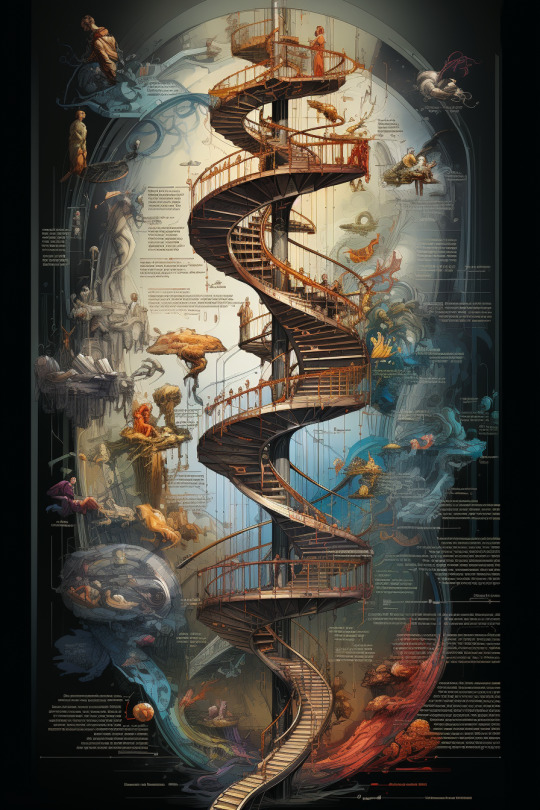
Later, when studying medicine, Watson and Crick's influential Nature article from 1953 became a print on my wall as a symbol of a pivotal moment in our understanding of the building blocks of life.

The revelation that life constantly replicates itself from a tiny biochemical molecule, governed by a code of four amino acids, felt like an epiphany.

During my biochemistry seminars at university, I immersed myself in the tangible process of gel electrophoresis. It fascinated me how this hands–on technique could visualize intricate sequences of tiny molecules.

Fast forward two decades, and I discovered the captivating world of generative art. Once again, I witnessed a process that transformed abstract, complex code into visually stunning outputs. I was enthralled (and have been ever since).

Gels by Shawn Douglas and Jason Brown beautifully intertwines my fascinations for both science and art. The project creates simulated images of gel electrophoresis results, including inaccuracies and artifacts. A video linked by the artists explains both the artwork and the scientific process it visualizes.
youtube
This project not only evokes nostalgia for my past but also employs the principles of computer code as a compelling analogy to the intricate tapestry of life itself. In displaying fragments of SARS-CoV-2 DNA and early Corona vaccine mRNA, Gels pays homage to the achievements of scientists and the role of science in navigating the challenges of the Covid pandemic.
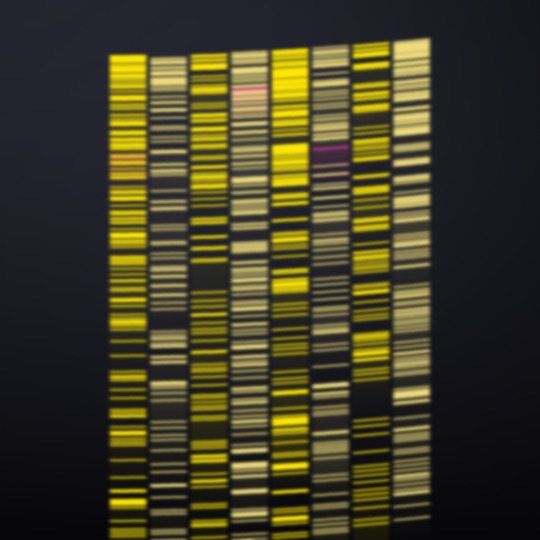

In putting the images at the end of its creative process, Gels challenges the conventional hierarchy between visual arts and science, where images often serve as supporting illustrations or as data points collected during the process, only to be turned into hard data, numbers, and formulas. It celebrates the image as an outcome, a visual manifestation of the scientific exploration and the intricate wonders it reveals, and acts as a bridge between art and science.
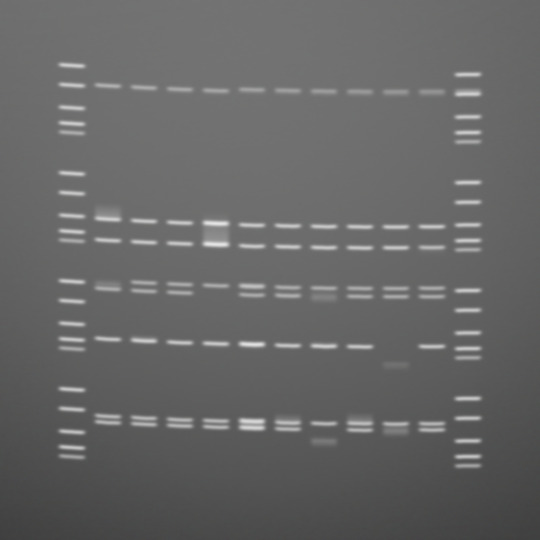
Gels shows how both disciplines explore, interpret, and communicate the wonders of our existence and take us on vibrant journeys of discovery that can reshape our understanding of ourselves and the world we inhabit.
0 notes
Text
Rust and Acid and Purple Hash
Pxlshrd's Visual Odyssey of Interconnected Realms
What strikes me as most remarkable in Pxlshrd's portfolio of generative artworks is his use of colours. The unusual palettes that the artist introduced in Breeding Grounds, Blockaden and asunder explore the profound impact that colours can have on our perception and emotions, and the recurring combinations of muted tones and unexpected accents in Pxlshrd's work unveil a unique visual language. When thinking of my associations with the artist's images, I come up with ideas of rust, acid, and lilac that I could not help but visualize with the help of AI.




The thematic undercurrent is 'the notion that all elements within the cosmos are interconnected and organized into smaller networks with parallel functions'. This idea resonates deeply with the artist's body of work, and his art pulsates with a palpable fascination for astronomy, biology and science-fiction that is inviting viewers on a journey through these realms, connecting them by an overarching concept and style.
The narrative spans 'from the neuronal circuitry of the human brain to the vast expanses of the cosmos', as shown in the microscopic musings of Limbic Vortex and in the macroscopic reveries of Breeding Grounds, making these two artworks pivotal points of this connection.
Microcosmic Musings: Limbic Vortex
The recent masterpiece Limbic Vortex stunned me with the variety of its outputs and the stylistic cohesion between the iterations. Pxlshrd prepared a detailed fx(text) article about it that I definitely recommend you to read to get an idea of the depth of this work: Mapping the connections of Limbic Vortex
In the development of the project, the artist drew technical inspiration and colour palettes from his earlier asunder and Blockaden, and thus further connects the individual artworks of his portfolio.
Spread across 298 parametric and minter–curated abstract images, we find dissolving wave functions, irregular grids of skewed, pixellated lines, and radiant explosions of colours. The foundation of parameters that Pxlshrd has provided the minters with would easily have allowed for twice the collection size, and I cannot help but wonder what beauties we might have seen with more iterations. Pxlshrd managed to tune the algorithm to find a balance between precision and chaotic beauty, resulting in a visual style that seamlessly merges technical enthusiasm with unrestrained artistic expression.
To get an idea of the beauty of this artwork, you can take a look at a gallery with my favourites from the project that I put on deca.art: Limbic Vortex




Within the microcosmic realm of the brain's neuronal circuitry, Limbic Vortex focusses on the limbic system—the part of the human brain that is considered to be the location of emotions and the gateway to our memories. The artist's use of colour palettes named after neurotransmitters reflects this function of the transmission of messages, echoing the intricate connections that shape our thoughts, emotions, and actions. The use of visual elements from Breeding Grounds, like the clusters of lines that converge at specific nodes on the canvas, and the utilization of some of its colour palettes, further emphasizes the link between Pxlshrd's artworks, and can be seen as a transfer of memories between these projects.
Macroscopic Reverie: Breeding Grounds
Standing on the other end of the cosmological scale from Limbic Vortex is Breeding Grounds. It offers a wide lens through which to perceive the interconnectedness of all things and was released more than a year before Limbic Vortex. It 'is inspired by the assumption that both the brain and the cosmic web are very similar in structural design' and makes comparisons between the human brain, social networks, galaxy clusters, and the universe itself. It is aptly considered to be an icon of generative art and part of the TENDER icon list.
Visually, the images from Breeding Grounds revolve around polygon cores that are connected by networks of trails. Visibility and density of these connections are varied between iterations, and the amazing and creatively named colour palettes make this work of art stand out among others. The resulting outputs radiate a noisy, digital sense of indeterminacy and ambiguity of scale that reminds me of both sub–atomic probability clouds and of cosmic structures and webs. Considering the project's inspiration, this is an outstanding artistic achievement.




In between these two cornerstones of Pxlshrd's greater narrative, we find artworks like acid memories, Blockaden, Indistinct Places or asunder, all relevant and beautiful on their own.
Techno–organic Marvel: acid memories
acid memories offers a wide variety of visual motifs. Each iteration within this project presents a multitude of interpretations, with elements reminiscent of bacteria, carpets, circuit boards, satellite pictures, and more. The artist skillfully combines rigid and technical structures with fluid and organic forms, resulting in visuals that can evoke floral patterns or furry textures.
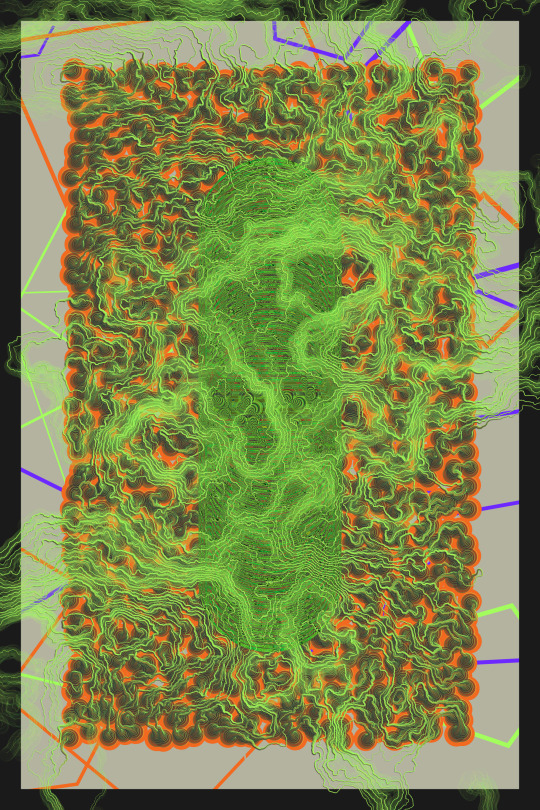



The images with the unique solo trait reveal how the outputs are composed of small blobs that are otherwise only obvious when we zoom in on them.
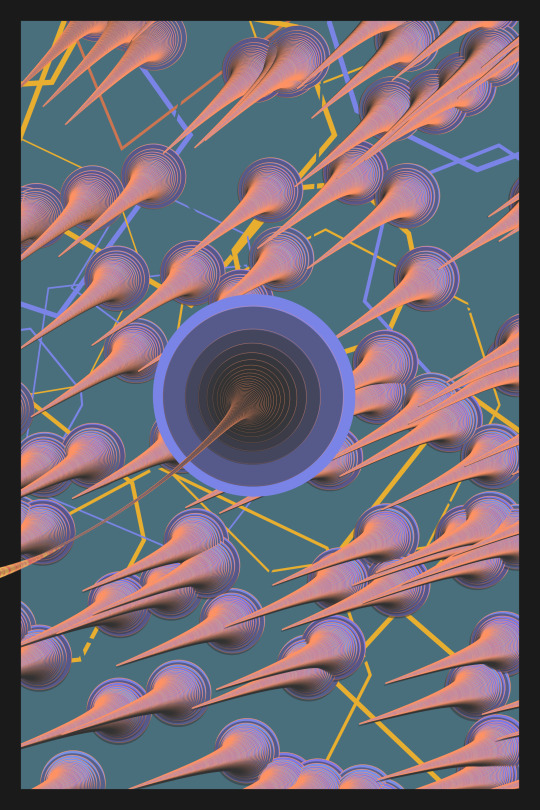
The additional element of continued drawing makes the iterations take on quite new aesthetics. My favourite one is #24 that could be seen to depict a bacterium surrounded by platelets that becomes engulfed in fibrin fibers (to see this, open the artwork in live view and press D).

Crumpled Landscapes: Blockaden and Indistinct Places
Blockaden was released between the artist's wild and abstract acid memories and his enthusiastically received, quasi-representational Indistinct Places.
The chronological neighborhood shows visually: we find a similar use of colours in both, and the varied outputs of Blockaden display both the rich textures of its precursor acid memories and the torn, ethereal landscapes of Indistinct Places that came after it. My favourite pieces of Blockaden are the ones that remind me of crumpled maps.


In Indistinct Places, we get to see more of these as the artist explores the welcoming land of warm confusion that lies behind the brief moment of contend disorientation that we go through when falling asleep. Rough or smooth, vivid or muted, the landscapes we get to see are as varied as the dreams they might be a prelude to, and in their style, some remind me of @_NatSarkissian's and @tender_art/@ajberni's Reconnaissance.


Order and Dissolution: asunder
asunder breaks away from traditional structures and perspective in a unique way. It varies the level of order in each iteration, resulting in some images that appear organized and others that seem to dissolve. The familiar palettes used in the artwork reflect the artist's signature style, yet the addition of a tone resembling the colour of old parchment and wavering outlines create a tangible and nostalgic look.




The Swarm of Olfactory Earthworms is Departing from Habitable Zones
While the artworks I have covered above are stations on the artistic journey that Pxlshrd set out on with Breeding Grounds, his earlier artworks are not to be neglected. Especially swarm charmer and Sketches of the Departure are my personal favourites, and I really recommend you to check them out.


After revisiting most of Pxlshrd's work, I can't help but say that I am even more excited about it than before. I hope that some of my enthusiasm fell on fertile ground.
1 note
·
View note